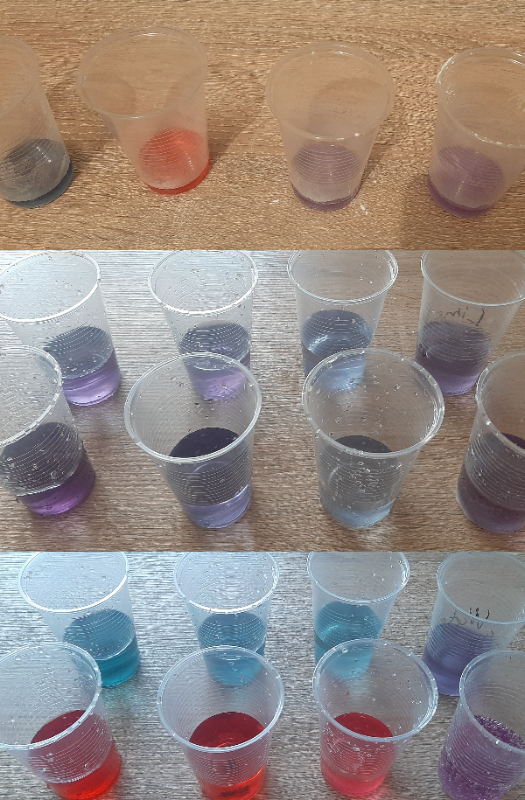Introduction
Theory
Welcome to the amazing world of chemistry.
Follow the path ahead of you and you may learn a thing or two about the theory and practice of chemistry.
And everything can be done at home!
How some of the experiments will look like

What do you need?
What is chemistry without chemicals?
In the following ~10 experiments you will need things that you should have at home or that should be easy to get in the local supermarket, hardware store or pharmacy.
For the basic experiments you will need the following:
Water, citric acid (solid), sugar (powder), table salt, (baking) soda (or baking powder), starch (or flour)
Additional materials: Coffee filters, felt pens, cups/glasses, scissors
For the advanced experiments you will additionally need:
Red cabbage (fresh or frozen), mortar/cement (powder), iron nail or something disposable made of iron, povidone-iodine (or another iodine source found in the pharmacy).
Additional materials: File (for grinding down metal), cooking pot, heating plate.
What do you have to do?
Follow the instructions and do the experiment.
At the end of each page you will find a question that should be easy to answer once you have done the experiments.
If the theory at the beginning of the experiments isn't detailed enough for you, at the end of each segment you will find additional information about the chemical theory and practice. If you are not interested, you can just skip it.
To continue just type the word UNDERSTOOD into the solution box below, press "Enter" and continue to the next page by clicking on the button that appears if your answer correctly.